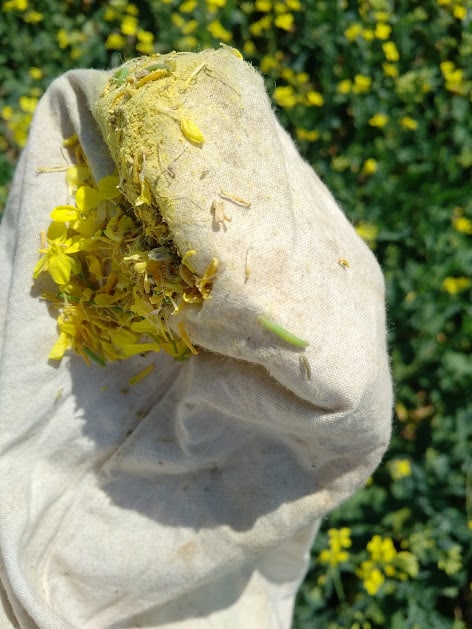Key Result
This project aims to generate updated insect pest information (ex. biology, monitoring protocols, risk and distribution maps, model outputs) that will be shared widely for public good, using existing communication networks, including the PPMN website and Weekly Updates.
Project Summary
Overview
Insect pests pose a significant risk to field crop production on an annual basis, with each crop potentially affected by multiple insect pest species each year. New insect pest information will be collected and will be used along with existing long-term insect monitoring data to develop models to predict risks associated with insect pests so that farmers can proactively manage risk, protect against yield losses, and increase the efficiency of agricultural production.
Insecticides remain an important tool in integrated pest management programs, however, the development of insecticide resistance needs to be monitored and managed. This research will also evaluate the current status of insecticide resistance in pest populations in Western Canada and develop procedures to monitor for resistance development into the future. These activities will ensure that appropriate insecticide chemistries are used for pest management to improve efficiency and prevent applications of ineffective products.
Finally, this research will contribute to the ongoing outreach efforts of the Prairie Pest Monitoring Network (PPMN). It will generate updated insect pest information (for example, biology, monitoring protocols, risk and distribution maps, model outputs) that will be shared widely for the public good using existing communication networks, including the PPMN website and Weekly Updates.
Objectives
- Understand insect pest population dynamics and forecast pest populations.
- Assess the current status of insecticide resistance in Western Canada.
- Develop new insect information resources.
Methods
A three-pronged approach can be used for addressing the ongoing need for information to combat insect-related crop losses in Western Canada. First, the research team will conduct field and laboratory experiments to fill knowledge gaps that hinder the development of predictive models for key pest species, and conduct annual monitoring for insect pests. This data contributes to annual risk assessments and will be added to the historical record of insect distribution and relative abundance across the Canadian Prairies.
Second, the research team will use new data generated by this project, existing knowledge garnered during past and ongoing research efforts, and historical monitoring records to develop and validate predictive models for additional pest species.
Third, the research team will leverage annual pest monitoring activities to test insect pest populations from across Western Canada for insecticide resistance and add this information to risk assessments for insect species. The project will help to reduce the risk of yield loss associated with insect pests, reduce the need for potentially harmful inputs, and maximize the efficacy of inputs that are necessary to combat insect pest outbreaks.






